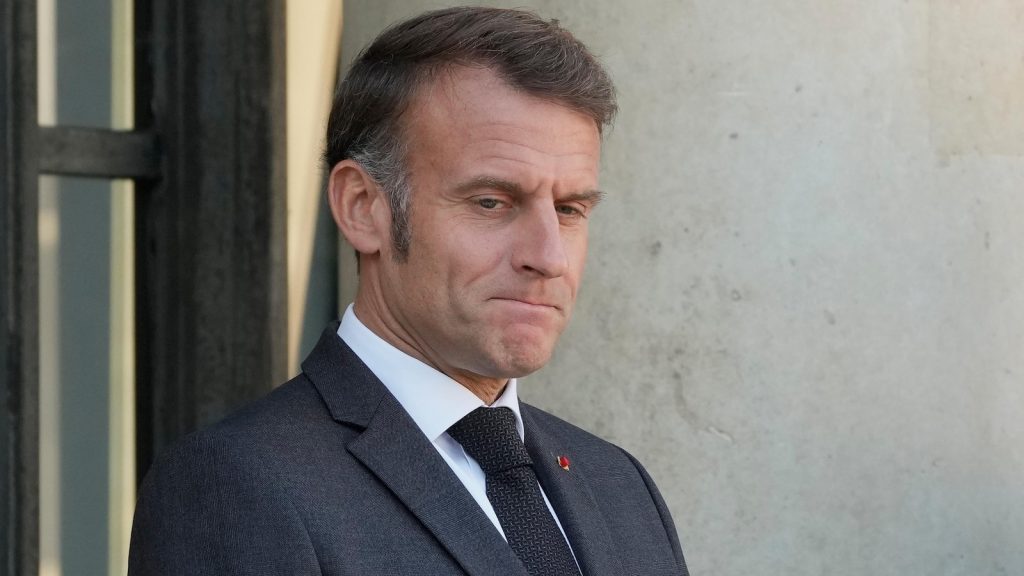France is a major industrial power with the world’s seventh-largest economy. So why are its government finances in such a mess?
A political deadlock in parliament has left President Emmanuel Macron struggling to reduce an out-of-control deficit. Investors have sold off the country’s bonds. Ratings agencies have downgraded its creditworthiness.
It’s a major comedown for a country that, along with Germany, sets the agenda for much of what’s decided in the European Union.
These are some of the reasons why France got into debt trouble and what that might mean for the rest of the world.
France last balanced its budget in 1973, and maintained a generous welfare state with strong worker protections. That worked for years when solid economic growth was sweeping tax revenue into government coffers.
Accumulated debt was high — over 90% of annual gross domestic product from 2008 on — but manageable due to steady growth and years of near-zero interest rates.
Then came the pandemic, followed by an energy crisis after Russia cut off most natural gas supplies following its 2022 invasion of Ukraine. The French government spent heavily on subsidies to keep businesses afloat and shield people from higher energy costs. Globally, interest rates suddenly moved higher.
Debt in France jumped: from 98% of GDP in 2019 to 114% currently. The annual deficit last year ballooned beyond forecasts to 5.8%, well above the 3% limit under European Union rules.
Deficits matters because investors demand more in return when they lend the government money. Investors sold off France’s benchmark 10-year bond, driving its interest yield higher.
The government must eventually pay those higher interest costs when it sells new bonds to replace older, maturing bonds.
France’s 10-year bond yield, a key indicator of risk, is now 3.34%, up from below zero in 2021. That’s just below heavily indebted Italy. And France must now pay more to borrow than Greece, whose bonds yield 3.25%.
One big reason for the bond selloff: there’s no consensus on how to reduce the deficit. Parliament’s powerful lower house is divided among left, centrist and right-wing forces after Macron called snap parliamentary elections last year. And no group has enough power to make tough decisions on either raising taxes or cutting spending.
Both the left-wing alliance and the right-wing National Rally of Marine Le Pen have balked at relatively modest deficit reduction as they try to force Macron to call new elections, or to resign. The stalemate has triggered four changes of government in barely a year — an upheaval unprecedented in France’s Fifth Republic, founded by Charles de Gaulle in 1958.
Meanwhile the deadlock fuels uncertainty that unsettles business planning and investment. Higher bond interest also can raise borrowing costs for business because some loans use the government bond rate as a base for what businesses pay.
Macron’s fourth prime minister in 13 months, Sebastien Lecornu averting being ousted by pausing plans to raise the state pension system’s baseline retirement age from 62, to 64.
While Lecornu kept his job, it did nothing to reduce the deficit. He now faces weeks of debate over a budget that offers only a modest deficit reduction to 4.7%.
As the two biggest countries in the European Union, France and Germany have a lot to say about decisions made for the 27-country European Union. And action is needed.
Europe must help Ukraine and deter a newly aggressive Russia. It needs to figure out how to increase the EU’s productivity and growth as it faces challenges from the U.S., which has imposed higher tariffs on European goods. There are also economic threats from China, which is making technically advanced and cheaper cars that are pressuring European rivals.
Paralysis in Paris makes that work harder.
“Ultimately, Europe requires a robust Franco-German axis to address its numerous challenges,” said Carsten Brzeski, chief eurozone economist at ING bank.
Outside of Europe, many of the world’s major economies have also run up large post-pandemic debts. The International Monetary Fund singled out France, along with Brazil, China and the United States, as countries where debt levels are likely to rise significantly. The pressure to slash deficits could limit their ability to address a crisis that rises to the level of war in Ukraine or the pandemic.
The U.S. debt level of 119% of annual economic output is even higher than France’s. But France lacks two key US advantages: stronger economic growth, which reduces the size of the debt compared with the size of the economy, and the world’s dominant reserve currency, the dollar. The dollar’s widespread use helps to fuel Washington’s ability to borrow.
Market analysts say France isn’t in danger of defaulting on its debts. What France must avoid over the long term, however, is a death spiral in which rising borrowing costs raise questions about its ability to pay, leading to even higher borrowing costs. That is what happened to Greece in 2010-2011, leading to debt default, and to Italy, which was forced to install a technocratic government under Mario Monti that cut spending and instituted pro-growth reforms.
Since that eurozone debt crisis more than a decade ago, the European Union has installed a bailout fund and the European Central Bank has a financial backstop ready under which it could support a member country’s ability to borrow by purchasing its bonds on the secondary market.
But that option is available only in the event of “unwarranted” market turmoil, as the ECB puts it – meaning they’re unwilling to bail out politicians who won’t take action.


